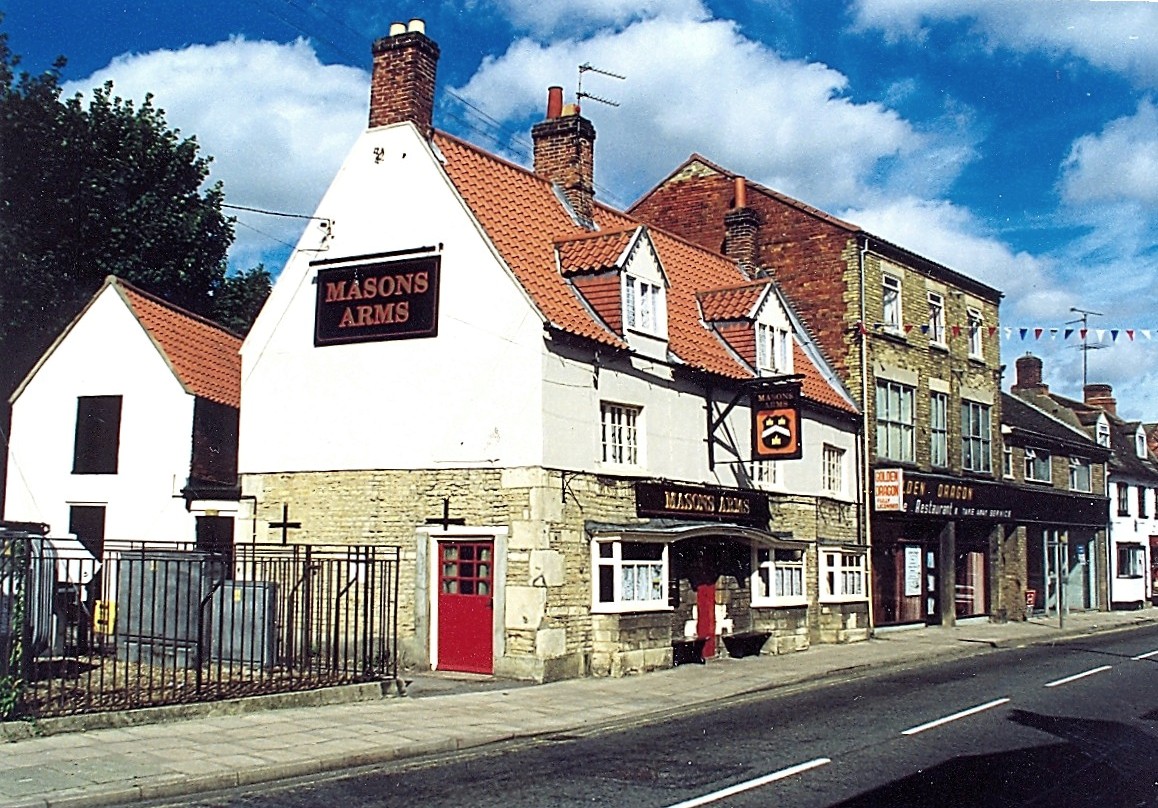|
The Mason's Arms
One of the most common names for a public house in this country is the Masonís Arms, popularly believed to date back to the time when travelling stonemasons built the churches and stately homes of England. They moved from job to job motivated by the demand for their labour and as they wanted somewhere to sleep and eat, hostelries sprang up nearby to provide their needs and survived the years to cater for a wider clientele. Our own Masonís Arms in South Street is likely to have had such origins, there being an inn on this site for centuries, close to the 12th century Abbey Church which needed a small army of masons to build and maintain. The public house has changed many times since those days, the present stone construction dating back almost 300 years and is now one of Bourneís 71 listed buildings as being of special architectural and historic interest, having been scheduled as Grade II since 21st July 1977. The listing survey published by South Kesteven District Council described it as follows: ďEarly 18th century. L-shaped. Coursed rubble, stucco upper storey and stone quoins. Has been repaired and modernised. Two storeys. Pantile roof, two small slate hung gabled dormers. Three windows, three light, original sliding sashes, flat arch with keystone. Three small bays with 19th century window, lead roofs. A curved hood spread over central doorway, which is rusticated, and the two windows flanking it, forming a shallow porch. Simple wood and wrought iron sign bracket.Ē There has been a varied mix of customers over the years ranging from artisans, shop and office workers employed in the neighbourhood and people who lived locally, and they have included two men who became regulars in past times after achieving fame in their respective fields. The first was Job Hartop (1550-1595), a farmer's boy working on the land near Bourne, who hankered after a life of adventure and ran away to sea when he was 12 years old. After a short apprenticeship with a gunpowder manufacturer in London, he signed on with the English admiral Sir John Hawkins and sailed the Spanish main in the company of the young Francis Drake. He was captured by the Spanish on his third voyage and served ten years as a galley slave and thirteen years in a Spanish prison but managed to escape and make his way back to Bourne where he spent his final days recounting his adventures in his local pub, the Masonís Arms. The privations he suffered, however, had taken their toll and he died at the age of 45. The other was Charles Sharpe (1889-1963) also a farmer's boy from Pickworth, near Bourne, who ran away from home and joined the army. During the Great War of 1914-18, an act of conspicuous bravery earned him the Victoria Cross, Britain's highest decoration for valour, and he subsequently inspired many young men to enlist. On return to civilian life, he worked at a number of jobs, notably as a physical training instructor to boys at the Hereward Camp approved school who regarded him as a role model and later as groundsman at the War Memorial and Wellhead Gardens, close to the Masonís Arms which became his local. But despite his popularity in the pub, Charles Sharpe never once discussed his time in the trenches or the action which earned him such high honour. He was an unassuming and modest man who when asked would reply: "A British soldier will never glorify his own deeds. I only did my duty." Today, the Masonís Arms remains a busy town centre hostelry, keeping up with the changing trends in the licensed trade by serving food and providing entertainment and although these are hard times for Englandís traditional pubs, prospects for the future remain optimistic.
Go to: Main Index Villages Index |
